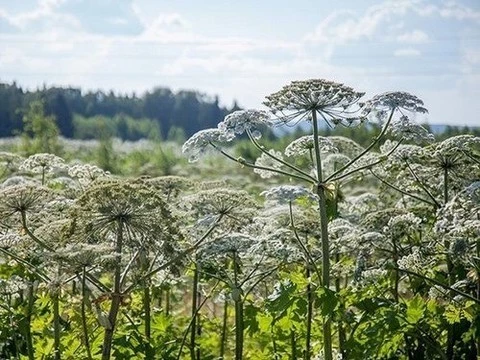What can hogweed do to a person? We explain it scientifically


Experts attribute this expansion to the incredible vitality of hogweed: one plant produces up to 70,000 seeds, which remain in the soil for up to 10–15 years. In addition, its growth is almost not restrained by pests or diseases, and climate change only expands its comfortable habitat.
As a result, even systematic control often turns out to be ineffective - where the hogweed was mown down last year, new shoots appear in the new season. And while scientists are looking for ways to stop its invasion, ordinary people have only one thing left: to avoid contact and know how to protect themselves.
Why is hogweed dangerous? Photodermatitis, burns and allergiesHeracleum sosnowskyi and other species of this plant (for example, Heracleum mantegazzianum) contain furanocoumarins - photoactive substances that, upon contact with the skin and subsequent exposure to ultraviolet light (even in cloudy weather!), cause severe chemical burns.
1. The juice gets on the skin (even a drop is enough).
2. Furanocoumarins are incorporated into epidermal cells, making them hypersensitive to sunlight.
3. Under the influence of UV radiation, a photochemical reaction is triggered, leading to cell death and deep damage.
Symptoms of hogweed burn- Redness and itching (6–48 hours after contact).
- Fluid-filled blisters (resembling second-degree burns).
- Slow-healing dark spots (hyperpigmentation can last up to a year).
- In severe cases - tissue necrosis and scarring.
- The reaction is delayed - a person may not notice contact, but by the time symptoms appear, he or she may already have received serious damage.
- A weak sun is enough - even in cloudy weather, UV rays activate furanocoumarins.
- Burns may recur if the juice comes into contact with the skin again or if there is repeated exposure.
- Wash skin immediately with soap and water.
- Avoid sun exposure of the affected area for at least 48 hours.
- Seek medical attention (especially for extensive burns or facial lesions).
Important! Children and people with sensitive skin are at increased risk.
Also, hogweed (the whole plant: from roots to inflorescences) can cause allergic reactions and respiratory tract damage. Hogweed vapors can irritate mucous membranes, causing coughing, swelling and even asthma attacks.
medportal ru




